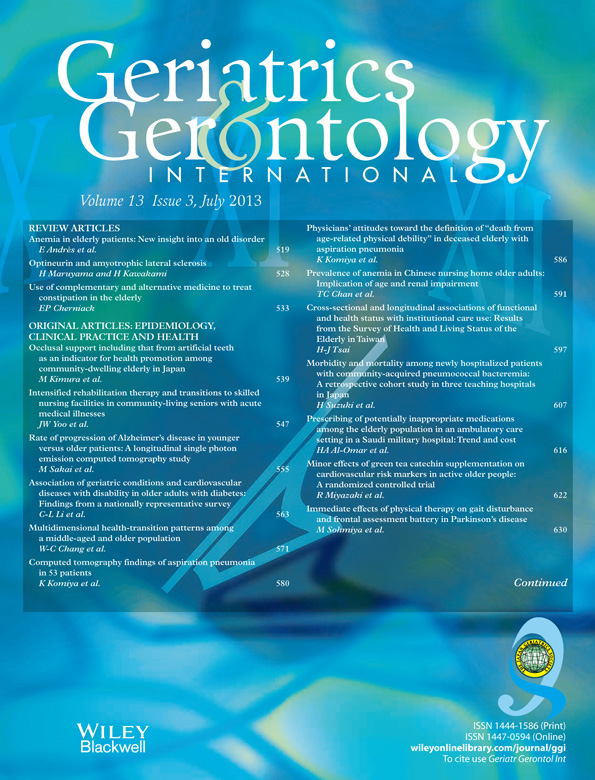Measuring illuminance and investigating methods for its quantification among elderly people living at home in Japan to study the relationship between illuminance and physical and mental health
Abstract
Aim
To measure illuminance in the home lives of elderly people to clarify the current state of affairs and concurrently investigate quantification methods for this purpose.
Methods
Illuminance and the physical and mental health of 24 elderly people living, with some assistance, in their homes in a prefecture in the Hokuriku region were studied over 3 days. Illuminance was quantified in accordance with the rotation of the earth, with day and night defined according to times of sunrise/sunset. Daytime mean illuminance and mean time exposed to seven levels of illuminance between 50 and 1000 lx during the day were calculated. Physical and mental health were assessed through interviews using the Instrumental Activities of Daily Living Scale, the Short-Form 36-Item Health Survey version 2, the Philadelphia Geriatric Center Morale Scale and the Geriatric Depression Scale-Short Form. Analysis of the correlation between illuminance and scores on mental and physical health was carried out.
Results
The mean score for daytime illuminance was 687 lx. The mean time for daytime exposure to light above 400 lx was 59 min. A significant positive correlation was found between daytime mean illuminance, time exposed to light over 400 lx and life satisfaction. A significant negative correlation was found between time exposed to light over 400 lx and depression scores.
Conclusions
Findings uncovered for the first time the actual illumination experienced by frail elderly individuals living at home in Japan. The quantification of illuminance is important, because research has shown a relationship between mental health and illuminance exposure. Geriatr Gerontol Int 2013; 13: 798–806.




